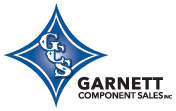DEEP DRAWN METAL STAMPING
PRECISION • INNOVATION • DEDICATION

DETAILS / INDUSTRIES SERVED
PRECISION • INNOVATION • DEDICATION
DETAILS
CERTIFICATIONS
ISO 9001:2015
IATF 16949
EN ISO 15378
available upon request
COUNTRY OF ORGIN
United States
Mexico
SAMPLING PROCESS
PPAP FAI (First Article Inspection)
LEAD TIME
To Be TBD/ARO
ENGINEERING
2D PDF
3D Models
File Types
.STP
.IGES
CAD
METALS
ALUMINUM
STAINLESS STEEL
MILD STEEL
BRASS
COPPER
TITANIUM
INDUSTRIES SERVED
PHARMA & MEDICAL
INDUSTRY
CONSUMER
AUTOMOTIVE
PROCESS
PRECISION • INNOVATION • DEDICATION
DEEP DRAWN METAL STAMPING
Deep drawn metal stampings refer to a manufacturing process in which flat sheet metal is progressively formed into a three-dimensional shape, often a hollow or cylindrical part, using a die and a punch. This technique is widely used to produce seamless, high-strength components for various industries.
How Deep Drawing Works
Blank Preparation:
- A flat metal blank (usually circular) is cut from a larger sheet of metal.
Forming Process:
- The blank is placed over a die cavity.
- A punch applies downward force, drawing the metal into the die cavity, transforming it into the desired shape.
- Lubrication is often used to reduce friction and prevent tearing.
Progressive Steps:
- For complex shapes or deeper parts, multiple stages of drawing may be required.
- Each stage gradually forms the part to prevent thinning or cracking of the material.
Trimming and Finishing:
- Excess material is trimmed, and edges are smoothed.
- Additional processes like heat treatment, coating, or surface finishing may be applied.
Key Features of Deep Drawing
Seamless Components: Produces parts without joints or seams, enhancing strength and integrity.
- Material Efficiency: Minimal waste compared to machining processes.
- Versatility: Suitable for simple and complex geometries.
Advantages
- High Strength: Seamless parts are inherently stronger and more resistant to stress.
- Cost-Effective for High Volumes: Tooling costs are offset by efficiency in large production runs.
- Dimensional Accuracy: Ensures consistent, precise parts.
- Material Variety: Can work with various metals, including aluminum, stainless steel, brass, copper, and titanium.
- Lightweight Design: Enables the creation of thin-walled, lightweight components.
Disadvantages
- High Initial Tooling Costs: Designing and manufacturing dies can be expensive.
- Material Limitations: Some metals may be prone to tearing or wrinkling if not properly processed.
- Thickness Variability: Uneven thinning can occur in deep-drawn parts.
- Complex Setup: Requires precise control of punch speed, lubrication, and material properties.
Applications
Deep drawn stampings are widely used in industries such as:
Automotive:
- Fuel tanks, oil filters, exhaust components, and transmission housings.
Aerospace:
- Aircraft fuselage parts, instrument housings, and lightweight structural components.
Consumer Goods:
- Kitchen utensils, pots, and pans.
Electronics:
- Battery casings, sensor enclosures, and shielding cans.
Medical:
- Surgical instruments, implantable devices, and diagnostic equipment housings.
Industrial:
- Pressure vessels, cylinders, and components for heavy machinery.
Materials Used
Deep drawing is suitable for ductile metals that can withstand deformation without cracking, such as:
- Aluminum
- Stainless steel
- Mild steel
- Brass
- Copper
- Titanium
Tips for Successful Deep Drawing
- Material Selection: Use ductile materials to avoid tearing.
- Lubrication: Apply adequate lubrication to reduce friction and extend tool life.
- Proper Tool Design: Ensure precise die clearance and punch radius to minimize defects.
- Progressive Drawing: Use multiple drawing steps for deeper or more complex parts.
Deep drawing is a versatile and reliable process for producing strong, lightweight, and seamless components. If you need help selecting materials, designing tools, or understanding its application for your project, let us know!
PROFESSIONAL CERTIFICATIONS


MEMBER ASSOCIATIONS

CONTACT A GCS REP IN YOUR AREA
TOMMY GARNETT
919-801-4627 | tommy@gcsrep.com
Territories: All
ARTIE SMITH
919-475-4775 | artie@gcsrep.com
Territories: VA, NC
MARK SNYDER
678-699-9152 | mark@gcsrep.com
Territories: AL, TN, KY
BRIAN CONNOR
912-484-7440 | brian@gcsrep.com
Territories: GA, FL
ANDY SLAUGHTER
803-413-4478 | andy@gcsrep.com
Territories: SC
APRIL SLEPIAN
239-770-0476 | april@gcsrep.com
Inside Sales Manager
CAMERON ALIMI
336-542-7753 | cameron@gcsrep.com
Inside Sales
RICARDO MALACARA
+52-331-799-9897 | ricardo@gcsrep.com
Territories: Guadalajara, Mexico
GERMAN DOMINQUEZ
+1 915-843-9391 | german@gcsrep.com
Territories: Juarez, Mexico
AGUSTINE PIMENTEL
+915-491-2810 | agustine@gcsrep.com
Territories: Juarez, Mexico


